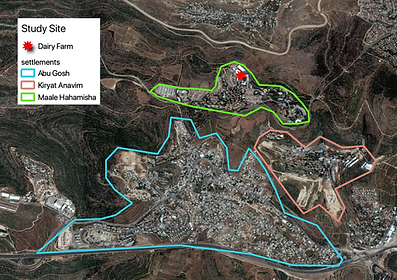
Reviewing papers by others is a part of the game, checkout Orr's Publons profile for contributions as a reviewer or the Research Gate and Google Scholar profiles for publication list
Reviewing papers by others is a part of the game, checkout Orr's Publons profile for contributions as a reviewer or the Research Gate and Google Scholar profiles for publication list
Movement Ecology and Individual Behavior
Feral pigeons as disease vectors
Together with Avishai Lublin from Kimron veterinary Institute
Animal movement and disease ecology are obviously interconnected because moving animals spread diseases and also because pathogens may alter how animals move. This integration is an important topic of discussion among scientists who aim to predict and prevent the outbreak of zoonotic diseases (disease that can be passed from animals to humans). In this project we collect movement and disease data to investigate the role of feral pigeons (Columba livia), as potential vectors in disease transmission among dairy farms and agricultural sites in central Israel.


Why pigeons?
We all know feral pigeons. They are a ubiquitous species found in most urban and agricultural environments around the world. Studies have found that pigeons carry a variety of agricultural and public health relevant viral, bacterial, and fungal pathogens. For instance, a comprehensive review found that feral pigeons have been documented to carry at least 60 different human pathogenic organisms such as Newcastle Disease Virus, Chlamydia, Crypotocossus, and West Nile Virus among others (Haag Wackernagel and Moch, 2003). Pigeons’ superb flight ability, combined with behaviors, such as feeding in high densities and roosting outside their feeding site and in proximity to humans, creates an ideal scenario for transmission of opportunistic pathogens. Some questions we look to answer about pigeons at our system are: which pathogens do pigeons carry? Are there heterogeneities in pathogen loads between individuals with different morph, sex, or size? Do pathogen loads or probability of transmission change between seasons?
Why agricultural sites?
Our main fieldsite is a dairy farm located within Kibbutz Maale Hahamisha in central Israel, just west of Jerusalem. Surrounding human settlements include Abu Gosh and Kiryat Anavim, and GPS data from our tagged pigeons have shown that many of the individuals feeding at the dairy farm are actually visitors from these urban locations. Agricultural sites like dairy farms offer pigeons both a resource abundant feeding site and a fair amount of protection from predators. However, these sites also bring pigeons into close proximity to humans and cows within the farm. This proximity increases the risk of transmission from/into pigeons.

Why movement?
Movement data provides important information that can be used to answer questions surrounding transmission dynamics of zoonotic diseases. Examples include: Do the pigeons that feed on the farm roost together in the same location, or does the farm serve as a spatial overlap in individuals that otherwise would not meet? Do movement patterns of pigeons change throughout the seasons? What are the variations in home ranges between individuals? These questions help us to understand the relationship between pigeon individual movement and potential pathogen spread.

The plan:
In attempt to answer all of these questions, pigeons at the farm are captured, sampled for pathogens, and tagged with GPS transmitters to collect disease and movement data. Collected samples are processed for bacteria and viruses in order to identify which pathogens are carried, and by who. We use rtPCR and even hope to use next-generation-sequencing (NGS) to identify even more pathogens!
Overall, combining knowledge on prevalence with movement data collected from tagged individuals will allow us to analyze the potential of pigeons as disease vectors.


